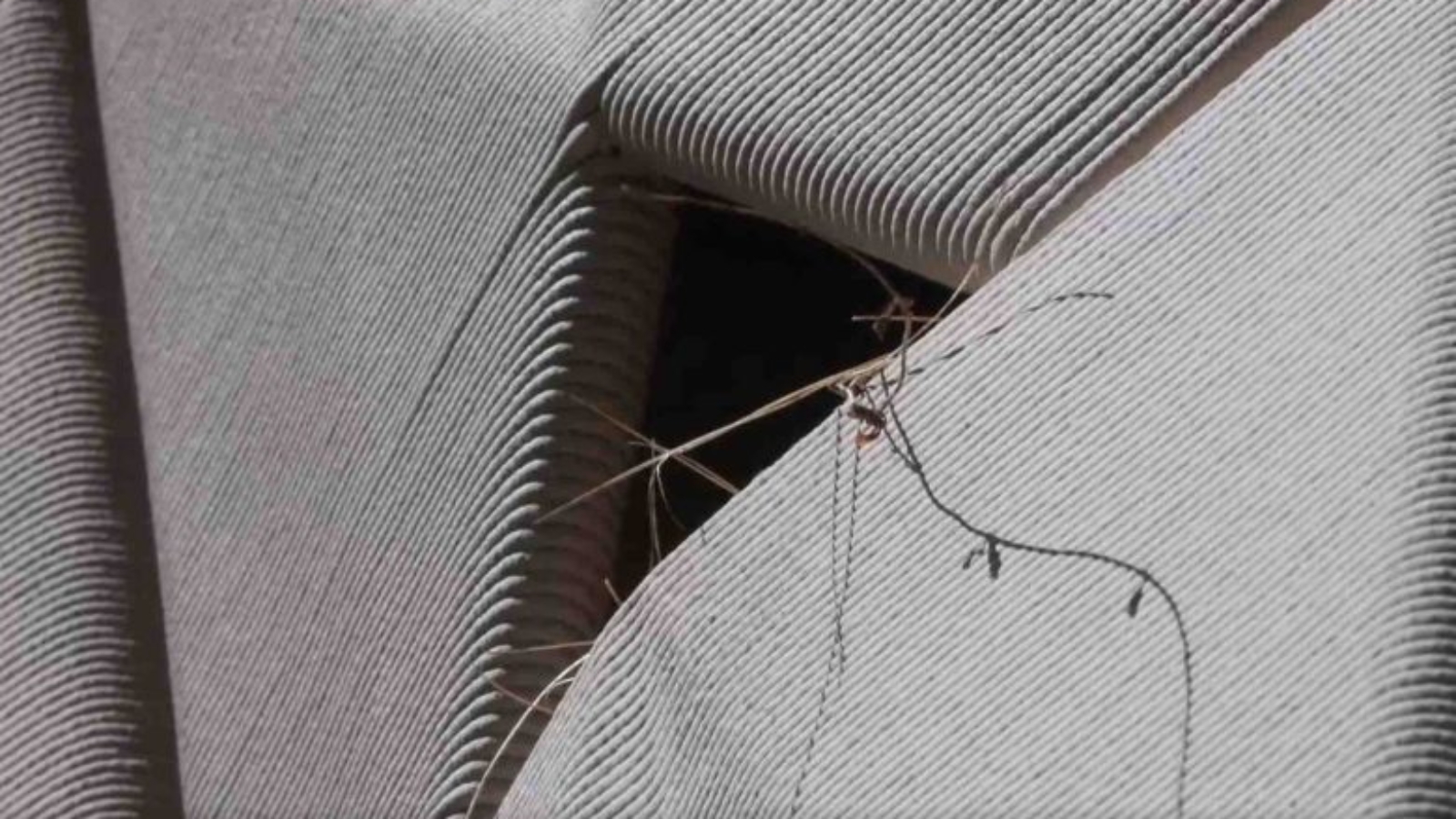Urban wildlife is quite amazing at adapting to city environments, both through behavioral changes and physiological ones. A study on Chicago rodents, for example, found that meadow voles had evolved to have smaller inner ear bones, possibly to mitigate the effects of noise pollution in urban areas. Despite this, humans must also recognize the challenges that our urban spaces create for animals and help by making accommodations and safe environments. On this front, a team from the Technical University of Munich (TUM) has created a 3D printed wall façade that functions as a nesting shelter for local wildlife.
The wall panel is a prototype made from a local clay material (40% of which is recycled) that was 3D printed in a sort of tesselated geometric structure. The cladding also integrates small gaps, which allow local birds, including sparrows and black redstarts, to access the hollow space between the structure and the wall to build nests. At the base of the 3D printed façade, additional entry points have been integrated so that hedgehogs too can make themselves a sheltered home. The wall cladding, reportedly the first of its kind, can reportedly accommodate over 20 birds and hedgehogs.

The 3D printed nesting is part of the broader ECOLOPES project, which envisions a more holistic urban environment that provides a suitable and healthy ecosystem for all living things. As the project description says: “In ECOLOPES we propose a radical change for city development: instead of minimizing the negative impact of urbanization on nature, we aim at urbanization to be planned and designed such that nature— including humans—can co-evolve within the city.”
Manufacturing on Demand
Led by Professor Wolfgang Weisser, TUM’s Chair of Terrestrial Ecology, the 3D printed wall façade project also brought on Professor Kathrin Dörfler, Chair of Digital Fabrication and Iuliia Larikova, a doctoral researcher at TUM who specializes in “additive manufacturing of climate-positive and biodiversity-improving façade elements”.

The completed façade prototype has been installed at the Feierwerk Südpolstation recreation center in Munich and not only functions as a nesting site for birds and hedgehogs but also offers the animals respite from the heat. This is achieved through a self-shading structure, meaning that it is designed in such a way that direct light does not reach it. This also has the potential to reduce heat inside the building for humans. As the prototype 3D printed structure is evaluated at the recreation center, the team behind it plans to create and install more wildlife-friendly wall structures, including on the historic Water Tower in Ingolstadt.
Last year, we wrote about a very different but also bird-related 3D printing initiative in the UK, which was installing 3D printed birds on artificial nests off the Suffolk coast to encourage the breeding of kittiwakes in the presence of wind turbines. Early results showed that the birds were indeed following the fake 3D printed birds and settling in to make nests in the Ørsted-initiated nesting station.
You might also like:
New ASTM standard to support 3D printing consistency: According to ASTM member Reza Foruzanmehr, the new standard addresses an existing gap by providing a test method that will identify the compatibility zone between cementitious mixtures and 3D printing extrusion systems in terms of optimal rheological properties. “Consider the example of a piping bag used for decorating cakes. If the cream inside is too stiff, it will not come out. If it is too runny, it will not hold its shape,” said Foruzanmehr, associate professor in the Department of Civil Engineering at the University of Ottawa. “The size and shape of the nozzle, as well as the force applied to squeeze the bag, also affect the outcome.”
* This article is reprinted from 3D Printing Media Network. If you are involved in infringement, please contact us to delete it.
Author: Tess Boissonneault


Leave A Comment